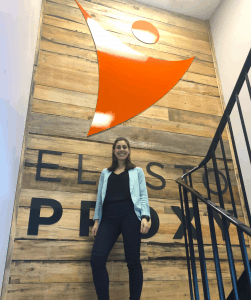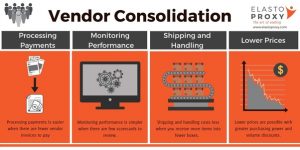Why do custom rubber profiles take so long to make and why are they so expensive? It’s not just about the design of the die or the availability of machine time or metalworkers. The extrusion process itself could cost more than you expect and take longer than you think. If a custom rubber profile seems like the only choice, keep reading to learn more about the costs and timelines. Elasto Proxy can source a custom rubber profile for you, but we also keep plenty of standard rubber profiles in stock.
Extruded Rubber and Machined Metal
Rubber profiles are extruded – and each extrusion requires a metal tool called a die. Extrusion is a manufacturing process that creates objects (such as lengths of rubber) with a fixed cross-sectional profile. To obtain this cross-section, material is pushed through a die with the desired shape and dimensions. To produce the die itself, metal is machined. In terms of both labor and materials then, die manufacturing carries costs. With a custom die, the costs are higher because the tooling is created from scratch.
The cost of a custom die varies but always involves three things:
- the type of material
- the quantity to extrude
- the complexity of the profile.
Material Types and Extrusion Quantities
Although some engineers still ask for “black rubber”, there isn’t just one type of material available. Rather, there are many different types of elastomers, as this group of polymers is known. As a rule, commodity materials are less expensive than specialty compounds; however, commodity rubber varies in price depending on the availability of ingredients and the law of supply and demand. There’s a lower unit price across higher volumes, but the quantity to extrude determines the total amount that you’ll pay.
Profile Complexity and Part Tolerances
The complexity of a custom rubber profile drives the amount of development time that an extruder needs. In other words, you’re not just paying for and waiting for machine time. There are design and engineering timelines, too. There’s also something else to consider. Tolerances are allowable variations in the dimensions of an extruded rubber product. Although rubber can’t match the tolerances of metal, rubber extrusions with tighter tolerances generally cost more to produce.
Die Making and Custom Rubber Profile Extrusion
Generally, it takes two to four weeks to make, or “cut”, a die. Then the extruder needs to test the die on the production line and makes any adjustments. Both the flow of the rubber and the dimensions of the profile must be correct. In terms of true costs, some amount of scrap material is produced. The amount of scrap varies, but it’s all part of making a custom extrusion.
You’ll also need to account for the time that’s required to extrude the custom rubber profile itself. Generally, this can take 8 to 14 weeks. Sometimes, the work can be done more quickly, but not if the profile is complex. Depending on where the extruder is located, there could be lengthy shipping times and higher freight charges. With the current shortage of shipping containers, there could be additional delays.
Custom Rubber Profiles vs. Standard Profiles
What’s the alternative to using a custom rubber profile? You can use a standard profile from Elasto Proxy instead. You won’t have to pay for tooling, and our network of warehouses keep hundreds of standard profiles in stock. We’re not just a rubber distributor either. If you need custom gaskets, Elasto Proxy can fabricate them for you. We use water jet cutting, offer a choice of bonding methods, and add value through services like kitting and custom packaging.
Ready to learn more? Contact Elasto Proxy










